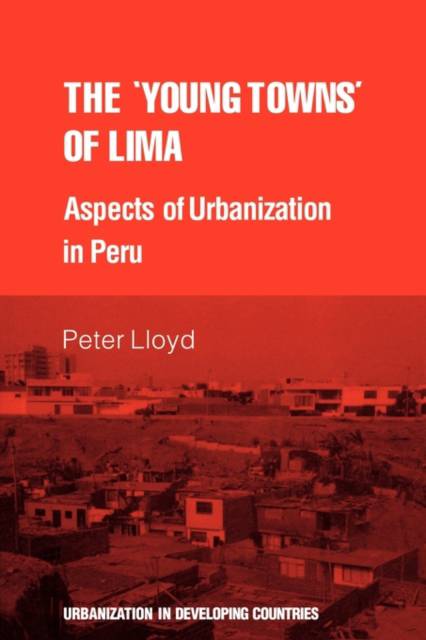
- Afhalen na 1 uur in een winkel met voorraad
- Gratis thuislevering in België vanaf € 30
- Ruim aanbod met 7 miljoen producten
- Afhalen na 1 uur in een winkel met voorraad
- Gratis thuislevering in België vanaf € 30
- Ruim aanbod met 7 miljoen producten
Zoeken
Omschrijving
The pueblos jóvenes or 'young towns' of Lima, capital of Peru, are one of the most spectacular phenomena of Latin American urbanization. They were originally formed when poor migrants from the sierra invaded vacant land within the city, initially erecting matting shelters; but latterly governments encouraged the upgrading of these settlements, through the self-help of their residents, and in consequence many older pueblos jóvenes developed into poor working-class suburbs with solidly built houses. In this book, which was originally published in 1980 as part of the Urbanization in Developing Countries series, Professor Lloyd outlines the processes that led to the formation of the pueblos jóvenes. First, the author shows that the settlement is a strongly cohesive community; and second that the term 'marginal', which is applied to both the settlement and its people, is in many senses inappropriate. He also critically examines government policies between the middle class and the poor.
Specificaties
Betrokkenen
- Auteur(s):
- Uitgeverij:
Inhoud
- Aantal bladzijden:
- 172
- Taal:
- Engels
- Reeks:
Eigenschappen
- Productcode (EAN):
- 9780521296885
- Verschijningsdatum:
- 28/11/1980
- Uitvoering:
- Paperback
- Formaat:
- Trade paperback (VS)
- Afmetingen:
- 152 mm x 229 mm
- Gewicht:
- 258 g

Alleen bij Standaard Boekhandel
+ 121 punten op je klantenkaart van Standaard Boekhandel
Beoordelingen
We publiceren alleen reviews die voldoen aan de voorwaarden voor reviews. Bekijk onze voorwaarden voor reviews.











